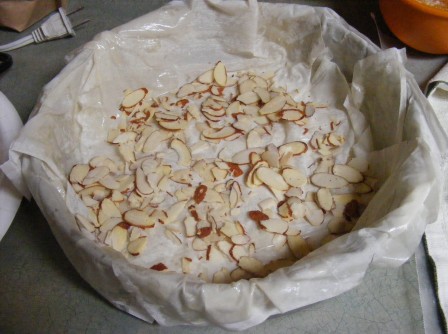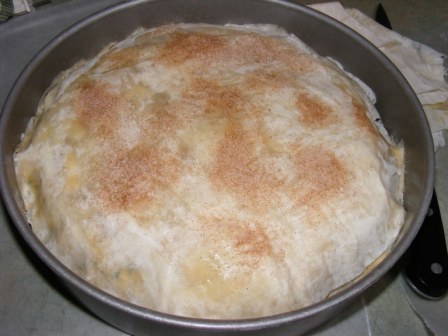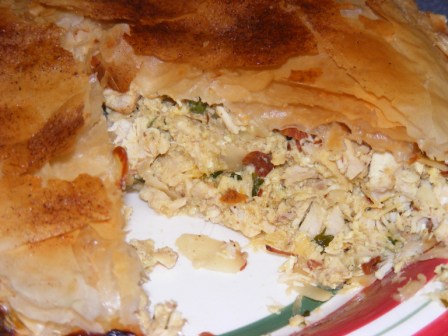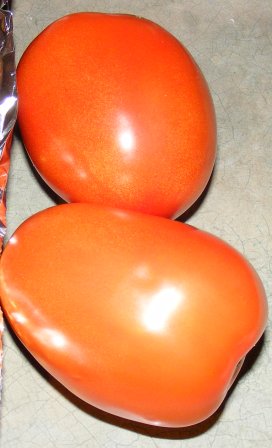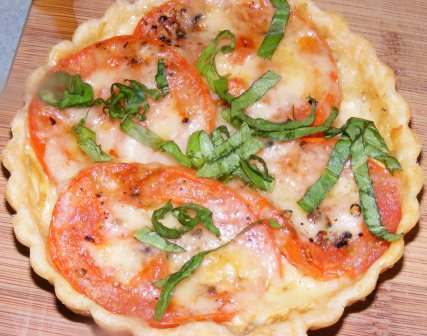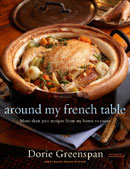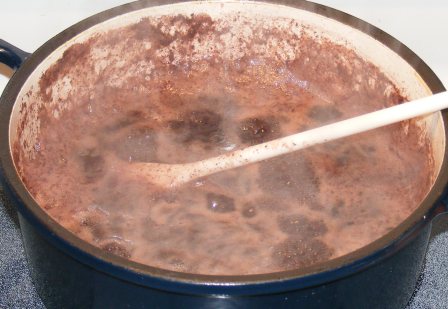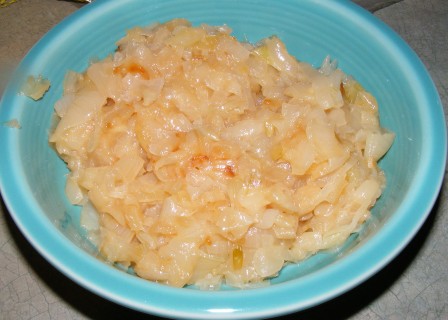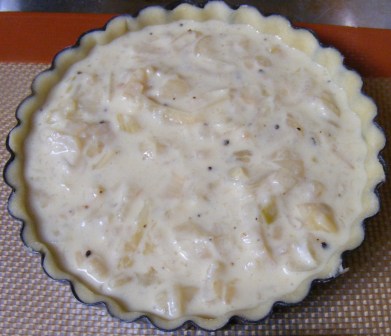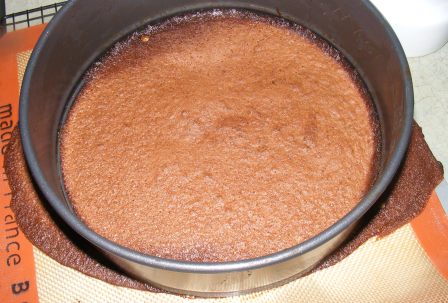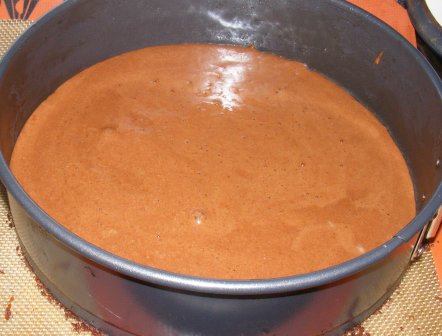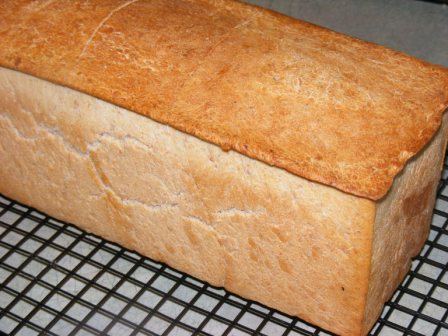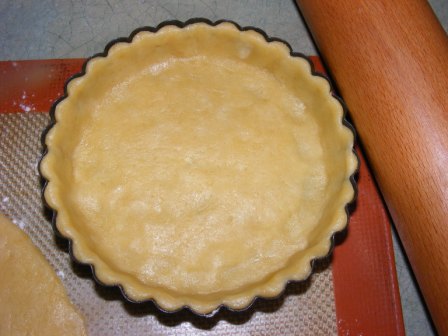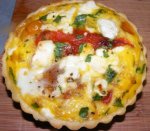This week’s pick for French Fridays with Dorie is actually a Moroccan dish that has been adopted — and adapted — by the French to the point that it fits perfectly in a cookbook like Around My French Table. I was excited by both the ingredients and techniques in this recipe. Savory dishes with spices like cinnamon and ginger are always a treat. And I was looking forward to working with phyllo dough, which was a new ingredient for me.
I began by marinating chicken breasts overnight in a mixture of onions, garlic, ginger, coriander, cinnamon, and saffron. I was intrigued by this part of the recipe, as I had never heard of a marinade made of aromatics and dry spices with no liquid. It worked, though, as the chicken came out nicely spiced and beautifully colored by the saffron.
I put the chicken and marinade in a pot with chicken broth and simmered the whole thing to cook the chicken.
I removed the chicken to a bowl to cool, then strained the broth, reserving the vegetables. I put the broth back in the pan, added lemon juice, and cooked it to reduce the broth to about one cup. Then I added eggs that had been whisked with honey, and boiled the whole thing down to a nice sauce.
I added the reserved onions and the chicken, which had been removed from the bone and chunked up, back to the pan, seasoned with salt, pepper, parsley, and cilantro, and stirred it together to make the filling.
Then it was time to assemble the b’stilla ( be-STEE-ah). I brushed a 9-inch cake pan with melted butter, then layered it with buttered sheets of phyllo.
I sprinkled sliced almonds on the phyllo in the pan.
Then I spooned in the filling, sprinkled on more almonds, and folded the phyllo over the top.
To top the b’stilla, I layered sheet of buttered phyllo, then cut them into an 11-inch circle.
I placed the phyllo on top of the b’stilla, tucked it around the sides, and sprinkled the top with cinnamon-sugar.
I baked the b’stilla in a reducing oven until the top was well-browned and crispy.
To serve, I inverted the b’stilla onto a baking sheet, then quickly turned it right side up onto a serving plate.
I sliced the b’stilla and served it for a satisfying winter supper.
As Dorie notes in the recipe, this dish needs no accompaniment. It’s a complete, filling, and satisfying meal on its own. We really enjoyed the complex flavors and textures of this dish: from the savory chicken to the slightly sweet spices and light-as-air phyllo crust.
My wife tried it and pronounced it her “new favorite dish.” So you can bet this offering from Dorie’s French table will be making regular appearances on mine.




